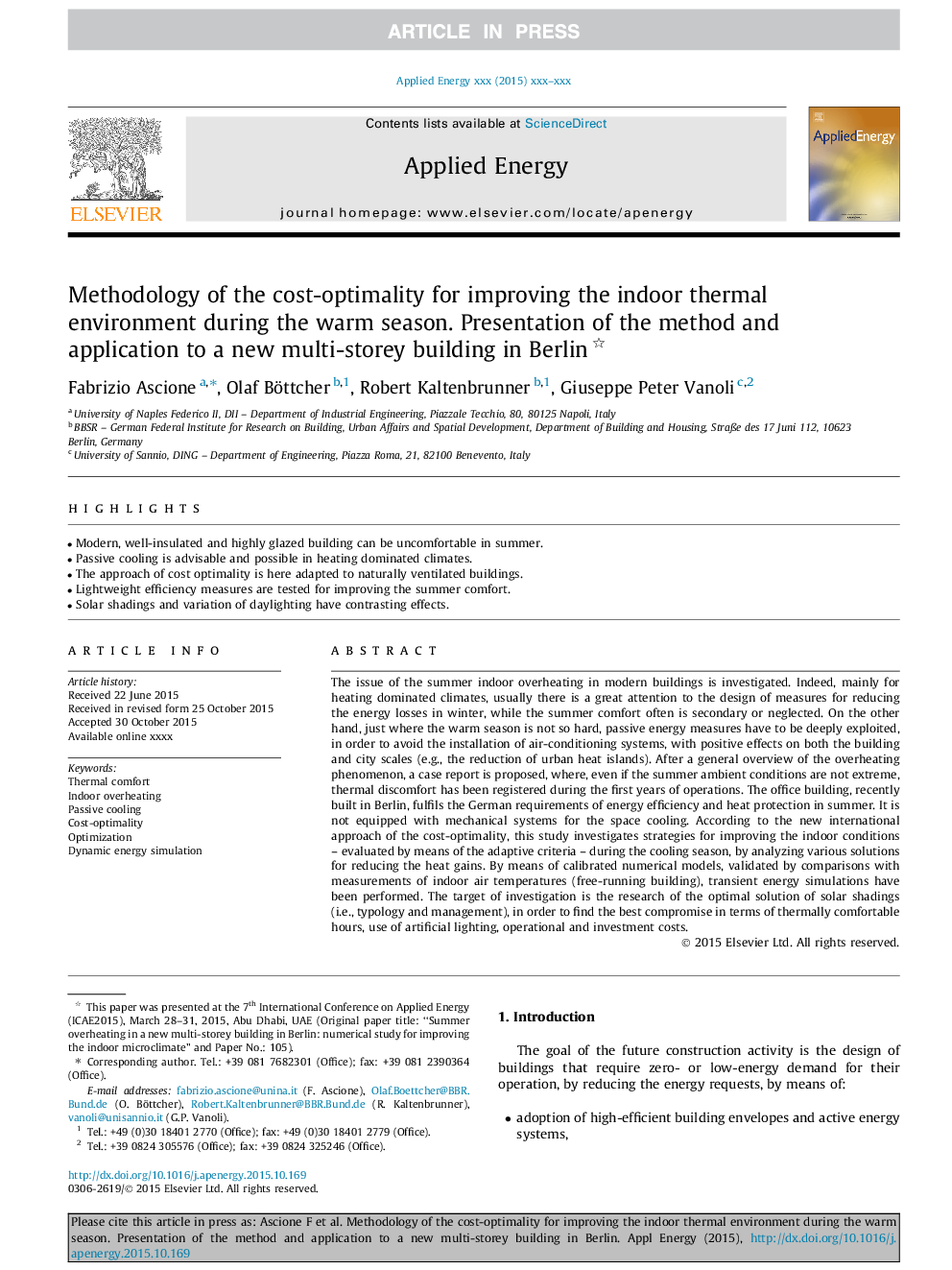| Article ID | Journal | Published Year | Pages | File Type |
|---|---|---|---|---|
| 4917086 | Applied Energy | 2017 | 13 Pages |
Abstract
The issue of the summer indoor overheating in modern buildings is investigated. Indeed, mainly for heating dominated climates, usually there is a great attention to the design of measures for reducing the energy losses in winter, while the summer comfort often is secondary or neglected. On the other hand, just where the warm season is not so hard, passive energy measures have to be deeply exploited, in order to avoid the installation of air-conditioning systems, with positive effects on both the building and city scales (e.g., the reduction of urban heat islands). After a general overview of the overheating phenomenon, a case report is proposed, where, even if the summer ambient conditions are not extreme, thermal discomfort has been registered during the first years of operations. The office building, recently built in Berlin, fulfils the German requirements of energy efficiency and heat protection in summer. It is not equipped with mechanical systems for the space cooling. According to the new international approach of the cost-optimality, this study investigates strategies for improving the indoor conditions - evaluated by means of the adaptive criteria - during the cooling season, by analyzing various solutions for reducing the heat gains. By means of calibrated numerical models, validated by comparisons with measurements of indoor air temperatures (free-running building), transient energy simulations have been performed. The target of investigation is the research of the optimal solution of solar shadings (i.e., typology and management), in order to find the best compromise in terms of thermally comfortable hours, use of artificial lighting, operational and investment costs.
Related Topics
Physical Sciences and Engineering
Energy
Energy Engineering and Power Technology
Authors
Fabrizio Ascione, Olaf Böttcher, Robert Kaltenbrunner, Giuseppe Peter Vanoli,
